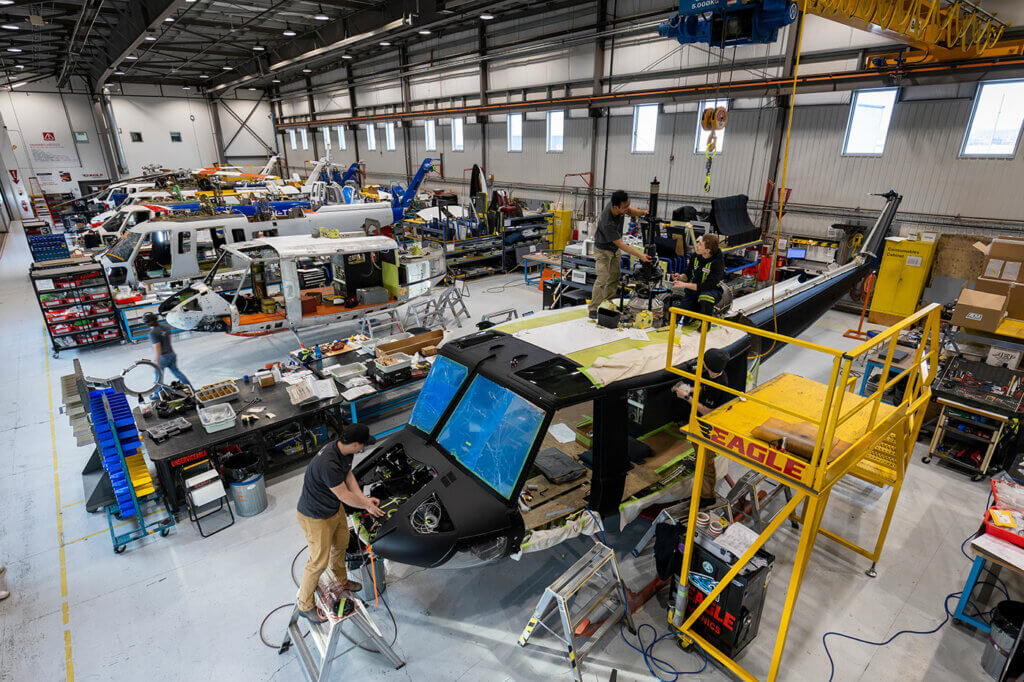Navigating Challenges in Helicopter MRO: Supply Chains, Workforce, and Future Trends
Helicopter maintenance, repair, and overhaul (MRO) providers worldwide continue to grapple with supply chain disruptions and workforce shortages. These industry-wide challenges were key discussion points during Aero Asset’s recent MRO & Supply Chain Roundtable, where global leaders shared insights into the state of helicopter maintenance and strategies for overcoming obstacles.
Supply Chain Struggles and Workforce Shortages
One of the most pressing concerns for MRO providers is the ongoing disruption in supply chains, leading to parts shortages and delayed maintenance schedules. The scarcity of essential components, combined with an aging workforce and a lack of young technicians entering the field, has created significant bottlenecks in operations.
James Carroll, head of MRO sales at GAMA Aviation, emphasized the importance of forward planning in maintenance operations:
“Better planning might help the industry balance its MRO resources. With an engine background, you can predict when a major inspection is coming based on flight hours. The more operators forecast their maintenance needs, the better prepared MRO providers will be.”
Toby Gauld, president of Optima Aero, agreed that planning is crucial but stressed that the primary issue is a lack of manpower and parts availability:
“We’re competing with military production, and commercial aviation is also pulling from the same pool of resources. Managing capacity has become a major challenge.”
Proactive Strategies for MRO Providers
Despite these challenges, some MRO providers are implementing strategic planning tools to mitigate risks. Jason Diniz, president of Eagle Copters, explained how his company has developed sophisticated planning systems:
“We’ve implemented an 18-month planning cycle at 75% capacity, allowing us to maintain a buffer for ad hoc work. This proactive approach has helped us navigate the unpredictability of parts supply and labor shortages.”
To address workforce gaps, Eagle Copters has also expanded its recruitment efforts internationally. By working with Transport Canada, the company has successfully onboarded foreign workers, with an impressive retention rate above 80%.
Similarly, Julien Paquette, service center director at G2 Aviation, noted that competition for skilled labor is fierce in the Montreal area due to the presence of OEMs and airlines. However, he expressed optimism that parts availability is improving for select engine models, thanks to OEMs extending the life limits of some components.
Emerging Markets and Opportunities
As the industry seeks new growth opportunities, emerging markets are becoming increasingly attractive for MRO expansion. Jason Diniz highlighted the potential for establishing a presence in Asia, where demand for MRO services is rising:
“We’re seeing a shift into emerging markets, but they lack the infrastructure seen in mature markets. Regulatory requirements, supply chain limitations, and logistical barriers remain challenges, but the potential for growth is undeniable.”
Paul Sankey, director at Emperor Aviation in South Africa, echoed these sentiments, stating that “the entire industry is facing the same challenges: parts supply and skilled labor shortages. Companies need to adapt by finding ways to attract new talent and improve supply chain resilience.”
Sustainability and the Future of Helicopter MRO
With the aviation industry pushing toward net-zero emissions, sustainability has become a priority in MRO operations. Companies like Optima Aero are focusing on extending the life of serviceable parts to reduce waste and carbon footprints.
“Our mission is to provide cost-effective serviceable parts while reducing our carbon footprint. We are developing a carbon footprint calculator to measure the impact of reusing materials in the industry,” Gauld explained.
GAMA Aviation is also prioritizing sustainability by maintaining and upgrading older helicopter models such as the Sikorsky S-76. Carroll emphasized the importance of corrosion control and asset preservation to maximize aircraft longevity.
The Path Forward for Helicopter MRO
As the helicopter MRO industry navigates these challenges, strategic planning, workforce development, and sustainability initiatives will be critical in shaping the future. Industry leaders agree that promoting career opportunities in rotary aviation, improving supply chain resilience, and investing in next-generation maintenance technologies are key to long-term success.
Diniz concluded with an appeal to younger generations:
“Unlike fixed-wing aviation, helicopters are always in demand, regardless of economic fluctuations. The industry offers a stable, rewarding career path, and we need to do a better job of showcasing that to the next generation of aviation professionals.”
As MRO providers continue to innovate and adapt, the industry remains poised for growth despite ongoing challenges. By embracing proactive planning, expanding global reach, and integrating sustainability efforts, helicopter maintenance organizations can ensure they remain competitive in an evolving marketplace.
